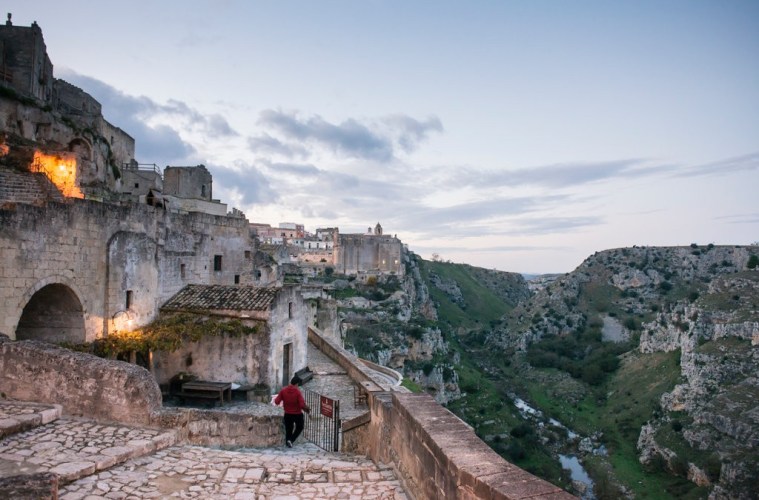Italy: Matera has a prehistoric soul

Matera: A mayor really isn’t supposed to say something like this. “We don’t want tourists.” I waited for the punch line. None came. “We don’t want to be occupied by tourists,” he continued.
Tourism, he explained, will deplete a city of its soul — and this city has a prehistoric soul.
I was in Matera, an ancient city of about 60,000 people, perched on top of Italy’s high heel. Mayor Raffaello De Ruggieri and I sat under a pergola of young vines, a spotty veil of shade beneath the Mediterranean’s punishing sun. In 2019, Matera — the jewel of the southern Italian region of Basilicata — will be anointed the European Capital of Culture. It is a source of great honor and pride for the town. All year long, there will be festivals and exhibitions. Thousands upon thousands of, well, tourists will descend on the city.
“This city has been alive for 8,000 years,” he told me. “But it has always been poor.”
Mr. De Ruggieri then began to review those last 8,000 years. And as he did, three dates in Basilicata’s recent history appeared over and over: Nineteen-thirty-two, when Basilicata was renamed Lucania by the Fascists (it reverted back to Basilicata in 1948). Nineteen-forty-five, when the dissident doctor and writer Carlo Levi published his memoir of exile here, “Christ Stopped at Eboli,” which became a definitive document of the realities of Southern Italy — extreme poverty, famine, disease, widespread malaria. Finally, 1993, and redemption, when the United Nations Educational, Scientific and Cultural Organization, or Unesco, added Matera to one of the most exclusive lists in the world.
De Ruggieri eyes crinkled with pride at the last development. “We went from shame to being a World Heritage site,” he said.
We were on the patio at the Sextantio Le Grotte Della Civita hotel having coffee and overlooking a ravine — a steep, rocky valley leading down to a gurgling riverbed and the dark, ancient, caves of Parco Nazionale Alta Murgia. Around us, the city told its own history: crude stone walls, stairs worn by armies of time, and, most extraordinarily, Paleolithic caves, once home to families and farm animals, carved into the matrix of the town. Some of them had recently, symbolically, been repurposed into luxury hotels and cafes. It was a striking dichotomy: A view that will transport you to the ancient past and a caffè macchiato that will bring you right back to the five-star present.
As recently as the 1950s, more than 15,000 people lived in the caves, but in 1952, the authorities declared that the living conditions in the caves were unacceptable and living in a cave became illegal. It wasn’t until 1986 that the Italian government realized their value and invested money in the rehabilitation of the caves.
“There are two sisters who have lived in a cave since 1950,” the mayor told me, conspiratorially. “They never left.”





